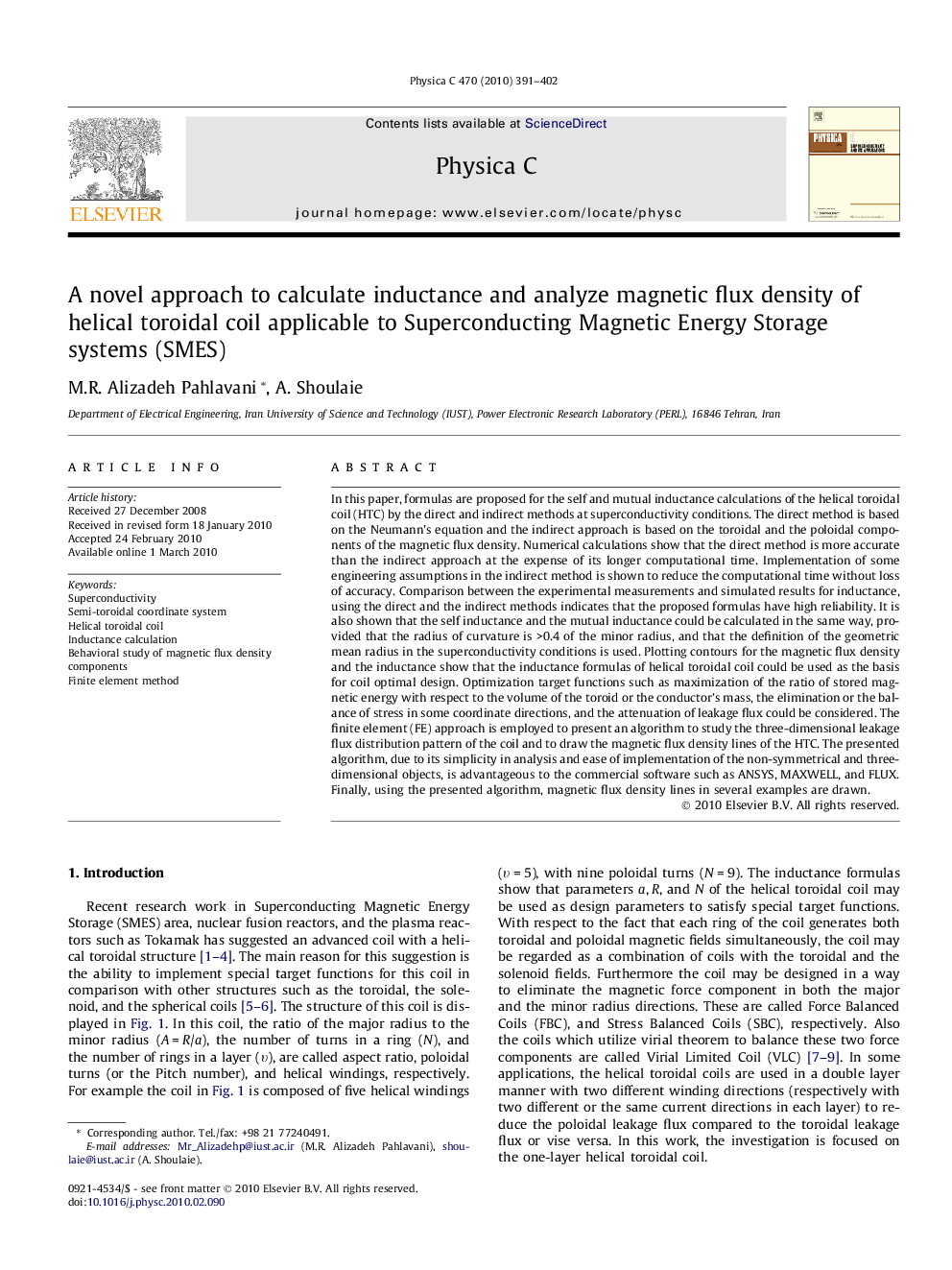| کد مقاله | کد نشریه | سال انتشار | مقاله انگلیسی | نسخه تمام متن |
|---|---|---|---|---|
| 1819052 | 1525758 | 2010 | 12 صفحه PDF | دانلود رایگان |

In this paper, formulas are proposed for the self and mutual inductance calculations of the helical toroidal coil (HTC) by the direct and indirect methods at superconductivity conditions. The direct method is based on the Neumann’s equation and the indirect approach is based on the toroidal and the poloidal components of the magnetic flux density. Numerical calculations show that the direct method is more accurate than the indirect approach at the expense of its longer computational time. Implementation of some engineering assumptions in the indirect method is shown to reduce the computational time without loss of accuracy. Comparison between the experimental measurements and simulated results for inductance, using the direct and the indirect methods indicates that the proposed formulas have high reliability. It is also shown that the self inductance and the mutual inductance could be calculated in the same way, provided that the radius of curvature is >0.4 of the minor radius, and that the definition of the geometric mean radius in the superconductivity conditions is used. Plotting contours for the magnetic flux density and the inductance show that the inductance formulas of helical toroidal coil could be used as the basis for coil optimal design. Optimization target functions such as maximization of the ratio of stored magnetic energy with respect to the volume of the toroid or the conductor’s mass, the elimination or the balance of stress in some coordinate directions, and the attenuation of leakage flux could be considered. The finite element (FE) approach is employed to present an algorithm to study the three-dimensional leakage flux distribution pattern of the coil and to draw the magnetic flux density lines of the HTC. The presented algorithm, due to its simplicity in analysis and ease of implementation of the non-symmetrical and three-dimensional objects, is advantageous to the commercial software such as ANSYS, MAXWELL, and FLUX. Finally, using the presented algorithm, magnetic flux density lines in several examples are drawn.
Journal: Physica C: Superconductivity - Volume 470, Issues 7–8, 1 April 2010, Pages 391–402